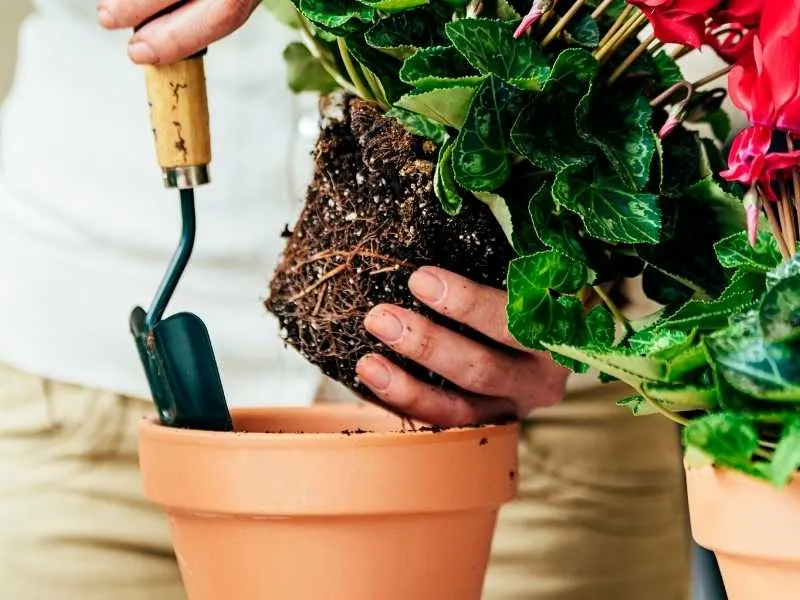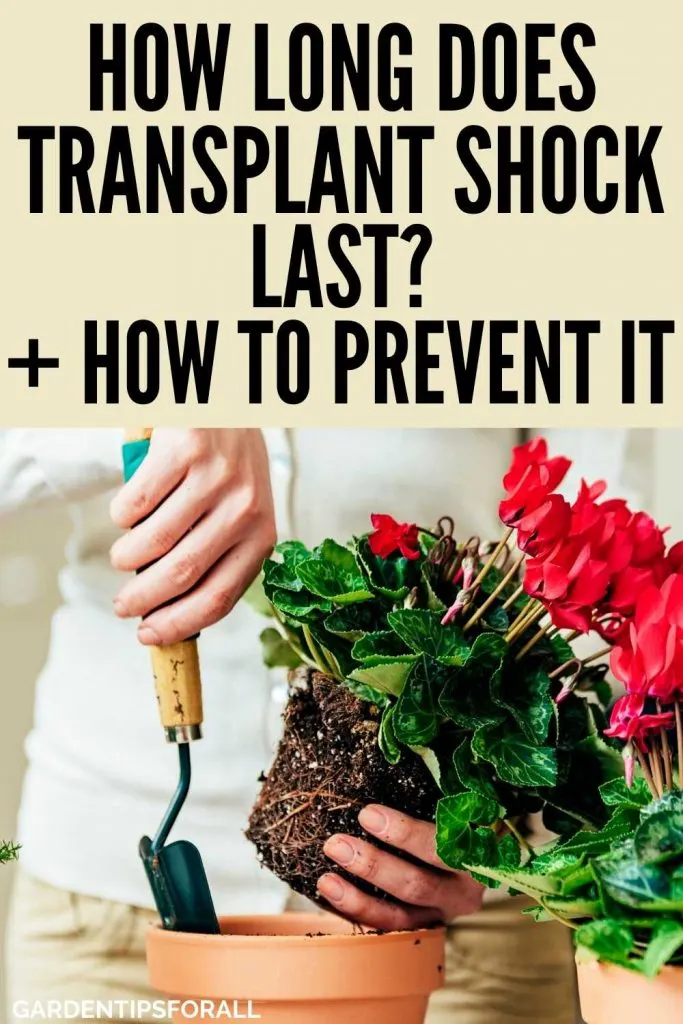How Long Does Transplant Shock Last in Plants? + [How to Prevent and Cure It]
Transplanting plants from one place to another might come with some effects. A transplant shock is one of the things that the plant might suffer from. This comes as a result of them not being able to get enough water in their new environment.
Also, a transplant shock is caused by the inability of the roots to re-establish themselves after the transplant. This is why you should take care of the transplanted plants to ensure that their roots develop quickly so that they can help in the absorption of water.
So, how long does it take plants to recover from transplant shock?
We discuss the answer here, plus how to prevent transplant shock as well as how to cure transplant shock.

How Long Does Transplant Shock Last in Plants?
It can last anywhere between a few weeks and 5 years, depending on the plant itself. This is because different plants have different amounts of recovery time. For instance, most vegetables will overcome the transplant shock within months, while trees might take years to recover. Also, some plants might take up to five years to thrive again.
Generally, transplanting has significant negative effects on plants due to the sudden change of environment and soil.
What are the Signs of Transplant Shock?
As a result of the stress that your plants go through after transplanting, here are the signs that you will notice in them.
- Scorched leaves
- Leaves become yellow (You may also want to read this article on why your elephant ear plant leaves are turning yellow and how to fix the problem).
- Leaf rolling
- Leaves withering
Scorched leaves are the main sign of transplant shock in plants, and with time the leaves might dry completely.
How to Prevent Transplant Shock
Get Healthy Seedlings
If you’re purchasing seedlings or getting them from a nursery, check if they are sick or damaged.
Make sure the seedlings are healthy, and if possible, verify the source of the seeds themselves.
If you transplant sickly seedlings, chances of curing the shock are minimal.
Wisely Choose the Transplanting Time
Transplanting time depends on the type of plants you want to move.
Nevertheless, the best time to move plants is during the dormant stage, usually before the swelling and breaking of buds.
Alternatively, you can move the plants after they have shed off the leaves.
Regardless of the method of transplanting you intend to use, these are the best times to move your plants.
Prepare the Ground
There are things you need to do before transplanting your plants. Your concern should be mainly on where you intend to move the plants to.
That’s because poor contact between the roots and new soil is one of the causes of transplant shock.
You should work on the ground and make sure that it has a bigger similarity to the initial location of the plants.
One of the best ways to do this is by taking the soil from that ground and moving it to the new planting space.
After that, water the ground for at least a week before transplanting with lots of water. This will make the soil cool and moist enough for the plants.
Uproot the Plants Together with their Root Bulbs
The process of uprooting the plants requires you to be careful.
Avoid using your hands because that will be causing more stress to the plants, and you don’t want them to wither or die.
Therefore, the best way to do this is by using a hand shovel to uproot the plant with everything around it. This way, the roots will be safe and continue receiving water and nutrients from the soil around them naturally before adjusting.
Also, uproot as many roots as possible to increase the chances of the plants thriving.
Dig Holes that will Accommodate the Root Bulbs
This is another excellent tip in reducing transplant shock. Before you uproot your plants, first dig holes in the new ground.
The holes should be big enough for the root bulbs to fit in. That way, the roots will not be constrained, thus hindering water absorption and growth.
Water the Plants Very Well
Plants require more water during transplanting than ever. However, that doesn’t mean you over-dampen the soil.
The watering should be done so that the soil will have the moisture needed by the plants. Also, it should be continuous until the plants recover entirely from the shock.
Don’t Fertilize the Plants Immediately
Fertilizers are great contributors to the increase in plant leaves. If you fertilize the plants immediately after transplanting, the leaves might overwhelm the roots and cause shock.
In other words, the nutrients in the soil should be enough for the new plant. Only fertilize after the transplant shock is over.
Apply Liquid Seaweed
Although this action is not a must, it is essential. Liquid seaweed is like a plant multivitamin and will considerably come through after transplant by activating microbes’ production and thickening the cell walls.
With this product, the roots of your plants will also be strong, and the plant will be able to withstand the stress that comes with transplanting.
Epsom Salt for Transplant Shock
You can avoid transplant shock by applying Epsom salt to the roots of the transplanted plants. Use 1 tablespoon of Epsom salt for every 1 gallon of water and saturate the roots of the transplanted plants.
Observe the Plants
There are very high chances that your plants will undergo the shock after transplanting.
Therefore, the best you can do is to keep an eye on them because, at that stage, they are prone to various issues.
You can mitigate the effects of transplanting shock by curbing any problem that worsens the condition of your plants.
Be keen to take note of pests or diseases and deal with them immediately. If you are unsure about the plants’ state, you can call a plant expert to advise you further.
Can Plants Recover from Transplant Shock?
The short answer to that question is Yes! But you will need to provide the plants with tender care to help them recover. Below are some of the things you can do to help transplanted plants recover from transplant shock.
Related: Do Tomato Plants Recover from Frost Damage?
How to Cure Transplant Shock
Sugar Water for Transplant Shock
If you did all of the above steps but realized that your plants still experienced the shock and it’s taking too long, you can cure them using sugar water.
Create a solution by adding one tablespoon of sugar for every quart of water. Then, apply this solution at the base and on the soil around the plant.
Sugar gives the plant more energy to survive the shock.
Water Even More
If you notice that the plants are withering, add even more water to the plants and ensure the roots are always moist.
Reduce and Trim Leaves
When the leaves are many, they stress the roots because of feeding. The best way to avoid this is by removing the excess leaves if the plant is too leafy or bushy, depending on the plant. However, you must be careful not to harm the plant.
Give it Some Time
Sometimes, plants can recover from transplant shock on their own. So, before you freak out and embark on drastic measures, give the plants a few days to recover. If they don’t, the methods I just detailed will be helpful.
Conclusion
Transplanting is not an easy moment for plants since it comes with a lot of risks. It can lead to the death of plants causing you to count losses. This is why you need to be prepared before moving your plants to a new area.
However, you don’t need to worry when you see their leaves turning yellow or have slowed growth. These are some of the signs of transplant shock. And with time and proper care before and after transplanting, your plants will be healthy again.

